Do you like baking and eating delicious cookies? If so, you should know that the cookie market is expanding both within the US and globally, offering real opportunity to a sharp baked goods entrepreneur.
Of course, starting and running a successful cookie business takes research, careful planning, and passion. Fortunately, you’ve come to the right place, as this step-by-step guide will walk you through the process of developing and launching your own successful cooke business, from researching the market to raising capital and marketing your product offerings.
Let’s get cooking!
Step 1: Decide if the Business Is Right for You
The first step is to understand the cookie market. That way, you can develop strategies for gaining and maintain a competitive edge. Here’s what you need to find out early on.
Pros and cons
You’ll want to know the benefits you stand to reap by investing in a cookie baking business and the stumbling blocks you’re likely to encounter.
Pros
- Low startup capital required
- Growing demand for healthier baked goods
- Drawing initial interest is easy
- Start at home, reducing costs
Cons
- Highly regulated industry
- Relatively small profit margins
- Intense competition
Cookie industry trends
Growing health-consciousness is a key growth driver. Yet there’s also a trend toward indulgence, as the sale of convenience-store baked goods, from bagels to donuts to cookies, is growing at nearly 9% annually, according to market analyst Mordor Intelligence.
Internationally, the outlook is even better. Research firm Market Data Forecast expects the global cookie market, which is already worth more than $30 billion, to see strong 5.3% annual growth through 2026.((https://www.marketdataforecast.com/market-reports/cookies-market))
Industry size and growth
Trends and challenges
Trends in the cookie industry include:
- Shift toward healthier cookie, biscuit, and snack options, including natural ingredients, whole wheat, low-calorie sweeteners, and gluten-free
- Growing interest in ready-to-bake products as indicated by a 20% growth in the refrigerated cookie and brownie dough segment and a stunning 86% growth in the frozen cookie dough segment((https://www.snackandbakery.com/articles/97074-state-of-the-industry-2021-cookies-see-growth-through-specialization))
- Seasonal and limited edition cookies, which can enable producers to take advantage of holidays like Halloween, Easter and the Christmas season to offer appealing products and boost sales
Challenges faced by the industry include:
- Labeling to identify the ingredients used
- Stiff competition from established brands
- Stringent government regulations
How much does it cost to start a cookie business?
Startup costs for a cookie business can be as little as $1,500 if you’re willing to operate from home, with minimal equipment, and rely on easy shipping. If you’re planning a larger operation with a commercial kitchen, you could spend up to $10,000 or more, though the average cost to launch a cookie business is about $5,000.
| Start-up Costs | Ballpark Range | Average |
| Setting up a business name and corporation | $150 - $200 | 175 |
| Business licenses and permits | $100 - $300 | 200 |
| Business cards and brochures | $200 - $300 | 250 |
| Baking equipment and supplies | $1,000 - $2,000 | $1,500 |
| Labeling and package design | $2,000 - $3,000 | $2,500 |
| Insurance | $100 - $300 | 200 |
| Website setup | $1,000 - $3,000 | 2000 |
| Total | $4,550 - $9,100 | $6,825 |
How much can you earn from a cookie business?
Depending on prices and marketing success, a new cookie business often brings in somewhere between $2,000 and $5,000 per month.
In your first year or two, you could work from home and sell 1,000 cookies per month at $3 each, bringing in $36,000 in annual revenue. This would mean around $14,000 in profit, assuming a 40% margin. As your brand gains recognition, sales could climb to 3,000 cookies a month. At this stage, you’d hire staff, reducing your profit margin to around 25%. With annual revenue of $108,000, you’d make a profit of $27,000.
What barriers to entry are there?
Competition from well-established players is the biggest barrier that new entrants into the cookie business face. Another major barrier is building relationships with wholesale suppliers and distribution channels, such as retail outlets, convenience stores and supermarkets, which tend to allocate shelf space to established brands.
Even so, you may benefit by locating your business in an area densely populated by your target market, while looking to build your brand through online sales.
Related Business Ideas
If you’re still not sure whether this business idea is the right choice for you, here are some related business opportunities to help you on your path to entrepreneurial success.
Step 2: Hone Your Idea
Now that you know what running a cookie company entails, let’s take it a step further by digging in and developing your concept.
Why? Identify an opportunity
Your direct competition will be national brands and established cookie businesses in your area. It’s a good idea to research all of them to determine their best-selling products and common price points. You should also keep an eye out for market gaps.
Is there a cookie you’re able to bake well that’s not out there on the market? Are your competitors over-charging for a popular cookie that’s cheap and easy to make? You just need to find a good opportunity and take your shot.
What? Determine your products or services
You might have the perfect recipes for traditional cookies such as chocolate chip cookies, crinkles, or oatmeal cookies. But it’s a good idea to find a niche before you start your cookie business.
Some of the cookies you could specialize in are gluten-free cookies, cholesterol-free cookies, vegan cookies, custom decorated cookies, low-sugar cookies, and other innovative offerings. It’s a good idea to target large batch orders. You might also consider expanding beyond cookies and offering brownies, cakes, and pastries.
How much should you charge for cookies?
Pricing primarily depends on the type of cookies that you’re baking. A gluten-free cookie, for instance, will cost more than a chocolate chip cookie.
Most cookie businesses charge between $0.50 and $6 per cookie depending on costs and packaging. Is it a bunch of cookies packaged together, like Pepperidge Farms, or a single large cookie? Or maybe it’s a roll of cookie dough that costs $9 and will make two dozen cookies.
Again, you’ll want to survey your competitors to help you determine your pricing structure. Ideally, it would be best if you stay within industry rates.
Once you know your costs, you can use this Step By Step profit margin calculator to determine your mark-up and final price points. Remember, the prices you use at launch should be subject to change if warranted by the market.
Who? Identify your target market
Your typical customer is likely to be families with disposable income. If you’re baking healthier cookies you might target people with diabetes, dieters, and gluten-intolerant people. Or you could just target health-minded successful professionals who also care about what their kids consume. Another option is to bake big, indulgent cookies and target the growing convenience-store segment, which is mostly blue-collar workers and college students.
It’s a good idea to target businesses within a five to ten-minute walk from your baking location and a driving distance of seven to ten miles. Further, you may want to offer delivery services to events within your area, such as weddings, graduations, and birthday parties.
Where? Choose your business premises
In the early stages, you may want to run your business from home to keep costs low. But you should have a reliable vehicle or at least a reliable local transport network to ensure prompt deliveries in your area. You should also familiarize yourself with regional and national shipping options, assuming you’re also offering online cookie sales.
As your business grows, you’ll likely need to hire workers for various roles and may need to rent out a storefront. You can find commercial space to rent in your area on sites such as Craigslist, Crexi, and Instant Offices.
When choosing a commercial space, you may want to follow these rules of thumb:
- Central location accessible via public transport
- Ventilated and spacious, with good natural light
- Flexible lease that can be extended as your business grows
- Ready-to-use space with no major renovations or repairs needed
Step 3: Brainstorm a Business Name
Your business name is your business identity, so choose one that encapsulates your objectives, services, and mission in just a few words. You probably want a name that’s short and easy to remember, since much of your business, and your initial business in particular, will come from word-of-mouth referrals.
Here are some ideas for brainstorming your business name:
- Short, unique, and catchy names tend to stand out
- Names that are easy to say and spell tend to do better
- The name should be relevant to your product or service offerings
- Ask around — family, friends, colleagues, social media — for suggestions
- Including keywords, such as “cookies”, boosts SEO
- Choose a name that allows for expansion: “Jim’s Bakery” over “Jim’s Cookies”
- Avoid location-based names that might hinder future expansion
- Use online tools like the Step by Step business name generator. Just type in a few keywords and hit “generate” and you’ll have dozens of suggestions at your fingertips.
Once you’ve got a list of potential names, visit the website of the US Patent and Trademark Office to make sure they are available for registration and check the availability of related domain names using our Domain Name Search tool. Using “.com” or “.org” sharply increases credibility, so it’s best to focus on these.
Finally, make your choice among the names that pass this screening and go ahead with domain registration and social media account creation. Your business name is one of the key differentiators that set your business apart. Once you pick your company name, and start with the branding, it is hard to change the business name. Therefore, it’s important to carefully consider your choice before you start a business entity.
Step 4: Create a Business Plan
Every business needs a plan. This will function as a guidebook to take your startup through the launch process and maintain focus on your key goals. A business plan also enables potential partners and investors to better understand your company and its vision:
- Executive Summary: Brief overview of the entire business plan; should be written after the plan is complete.
- Business Overview: Overview of the company, vision, mission, ownership, and corporate goals.
- Product and Services: Describe your cookie products in detail.
- Market Analysis: Assess market trends such as variations in demand and prospects for growth, and do a SWOT analysis.
- Competitive Analysis: Analyze main competitors, assessing their strengths and weaknesses, and create a list of the advantages of your services.
- Sales and Marketing: Examine your companies’ unique selling propositions (USPs) and develop sales, marketing, and promotional strategies.
- Management Team: Overview of management team, detailing their roles and professional background, along with a corporate hierarchy.
- Operations Plan: Your company’s operational plan includes procurement, office location, key assets and equipment, and other logistical details.
- Financial Plan: Three years of financial planning, including startup costs, break-even analysis, profit and loss estimates, cash flow, and balance sheet.
- Appendix: Include any additional financial or business-related documents.
If you’ve never created a business plan, it can be an intimidating task. You might consider hiring a business plan specialist at Fiverr to create a top-notch business plan for you.
Step 5: Register Your Business
Registering your business is an absolutely crucial step — it’s the prerequisite to paying taxes, raising capital, opening a bank account, and other guideposts on the road to getting a business up and running.
Plus, registration is exciting because it makes the entire process official. Once it’s complete, you’ll have your own business!
Choose where to register your company
Your business location is important because it can affect taxes, legal requirements, and revenue. Most people will register their business in the state where they live, but if you are planning to expand, you might consider looking elsewhere, as some states could offer real advantages when it comes to cookie businesses.
If you’re willing to move, you could really maximize your business! Keep in mind, it’s relatively easy to transfer your business to another state.
Choose your business structure
Business entities come in several varieties, each with its pros and cons. The legal structure you choose for your cookie business will shape your taxes, personal liability, and business registration requirements, so choose wisely.
Here are the main options:
- Sole Proprietorship – The most common structure for small businesses makes no legal distinction between company and owner. All income goes to the owner, who’s also liable for any debts, losses, or liabilities incurred by the business. The owner pays taxes on business income on his or her personal tax return.
- General Partnership – Similar to a sole proprietorship, but for two or more people. Again, owners keep the profits and are liable for losses. The partners pay taxes on their share of business income on their personal tax returns.
- Limited Liability Company (LLC) – Combines the characteristics of corporations with those of sole proprietorships or partnerships. Again, the owners are not personally liable for debts.
- C Corp – Under this structure, the business is a distinct legal entity and the owner or owners are not personally liable for its debts. Owners take profits through shareholder dividends, rather than directly. The corporation pays taxes, and owners pay taxes on their dividends, which is sometimes referred to as double taxation.
- S Corp – An S-Corporation refers to the tax classification of the business but is not a business entity. An S-Corp can be either a corporation or an LLC, which just needs to elect to be an S-Corp for tax status. In an S-Corp, income is passed through directly to shareholders, who pay taxes on their share of business income on their personal tax returns.
We recommend that new business owners choose LLC as it offers liability protection and pass-through taxation while being simpler to form than a corporation. You can form an LLC in as little as five minutes using ZenBusiness’s online LLC formation service. They will check that your business name is available before filing, submit your articles of organization, and answer any questions you might have.
Step 6: Register for Taxes
The final step before you’re able to pay taxes is getting an Employer Identification Number, or EIN. You can file for your EIN online or by mail or fax: visit the IRS website to learn more. Keep in mind, if you’ve chosen to be a sole proprietorship you can simply use your social security number as your EIN.
Once you have your EIN, you’ll need to choose your tax year. Financially speaking, your business will operate in a calendar year (January–December) or a fiscal year, a 12-month period that can start in any month. This will determine your tax cycle, while your business structure will determine which taxes you’ll pay.
It is important to consult an accountant or other professional to help you with your taxes to ensure you are completing them correctly.
Step 7: Fund your Business
Securing financing is your next step and there are plenty of ways to raise capital:
- Bank loans: This is the most common method, but getting approved requires a rock-solid business plan and strong credit history.
- SBA-guaranteed loans: The Small Business Administration can act as guarantor, helping gain that elusive bank approval via an SBA-guaranteed loan.
- Government grants: A handful of financial assistance programs help fund entrepreneurs. Visit Grants.gov to learn which might work for you.
- Venture capital: Offer potential investors an ownership stake in exchange for funds, keeping in mind that you would be sacrificing some control over your business.
- Friends and Family: Reach out to friends and family to provide a business loan or investment in your concept. It’s a good idea to have legal advice when doing so because SEC regulations apply.
- Crowdfunding: Websites like Kickstarter and Indiegogo offer an increasingly popular low-risk option, in which donors fund your vision. Entrepreneurial crowdfunding sites like Fundable and WeFunder enable multiple investors to fund your business.
- Personal: Self-fund your business via your savings or the sale of property or other assets.
Bank and SBA loans are probably the best options, other than friends and family, for funding a cookie business. You might also try crowdfunding if you have an innovative concept.
Step 8: Apply for Licenses/Permits
Starting a cookie business requires obtaining a number of licenses and permits from local, state, and federal governments.
Federal regulations, licenses, and permits associated with starting your business include doing business as (DBA), health licenses and permits from the Occupational Safety and Health Administration (OSHA), trademarks, copyrights, patents, and other intellectual properties, as well as industry-specific licenses and permits.
You may also need state-level and local county or city-based licenses and permits. The license requirements and how to obtain them vary, so check the websites of your state, city, and county governments or contact the appropriate person to learn more.
You could also check this SBA guide for your state’s requirements, but we recommend using MyCorporation’s Business License Compliance Package. They will research the exact forms you need for your business and state and provide them to ensure you’re fully compliant.
This is not a step to be taken lightly, as failing to comply with legal requirements can result in hefty penalties.
If you feel overwhelmed by this step or don’t know how to begin, it might be a good idea to hire a professional to help you check all the legal boxes.
Step 9: Open a Business Bank Account
Before you start making money you’ll need a place to keep it, and that requires opening a bank account.
Keeping your business finances separate from your personal account makes it easy to file taxes and track your company’s income, so it’s worth doing even if you’re running your cookie business as a sole proprietorship. Opening a business bank account is quite simple, and similar to opening a personal one. Most major banks offer accounts tailored for businesses — just inquire at your preferred bank to learn about their rates and features.
Banks vary in terms of offerings, so it’s a good idea to examine your options and select the best plan for you. Once you choose your bank, bring in your EIN (or Social Security Number if you decide on a sole proprietorship), articles of incorporation, and other legal documents and open your new account.
Step 10: Get Business Insurance
Business insurance is an area that often gets overlooked yet it can be vital to your success as an entrepreneur. Insurance protects you from unexpected events that can have a devastating impact on your business.
Here are some types of insurance to consider:
- General liability: The most comprehensive type of insurance, acting as a catch-all for many business elements that require coverage. If you get just one kind of insurance, this is it. It even protects against bodily injury and property damage.
- Business Property: Provides coverage for your equipment and supplies.
- Equipment Breakdown Insurance: Covers the cost of replacing or repairing equipment that has broken due to mechanical issues.
- Worker’s compensation: Provides compensation to employees injured on the job.
- Property: Covers your physical space, whether it is a cart, storefront, or office.
- Commercial auto: Protection for your company-owned vehicle.
- Professional liability: Protects against claims from a client who says they suffered a loss due to an error or omission in your work.
- Business owner’s policy (BOP): This is an insurance plan that acts as an all-in-one insurance policy, a combination of any of the above insurance types.
Step 11: Prepare to Launch
As opening day nears, prepare for launch by reviewing and improving some key elements of your business.
Essential software and tools
Being an entrepreneur often means wearing many hats, from marketing to sales to accounting, which can be overwhelming. Fortunately, many websites and digital tools are available to help simplify many business tasks.
You may want to use industry-specific software, such as GoFrugal, Lightspeed Retail, and Salesflare to plan your daily production, track inventory, manage employees, and simplify customer relations.
Accounting
- Popular web-based accounting programs for smaller businesses include Quickbooks, Freshbooks, and Xero.
- If you’re unfamiliar with basic accounting, you may want to hire a professional, especially as you begin. The consequences for filing incorrect tax documents can be harsh, so accuracy is crucial.
Marketing
Some of your business will come from the casual passerby or online visitors, but still, you should invest in digital marketing! Getting the word out is especially important for new businesses, as it’ll boost customer and brand awareness.
Once your website is up and running, make sure you link to your social media accounts and vice versa. Social media is a particularly good way of promoting your business because you can create engaging posts that advertise your products:
- Facebook: Great platform for paid advertising, allows you to target specific demographics, like men under age 50 in the Cleveland area.
- Instagram: Same benefits as Facebook but with different target audiences.
- Website: SEO will help your website appear closer to the top in relevant search results, a crucial element for increasing sales. Make sure that you optimize calls to action on your website. Experiment with text, color, size, and position of calls to action such as “Order Now.” This can sharply increase purchases.
- Google and Yelp: For businesses that rely on local clientele, getting listed on Yelp and Google My Business can be crucial to generating awareness and customers.
Kickstart Marketing
Take advantage of your website, social media presence, and real-life activities to increase awareness of your offerings and build your brand. Some suggestions include:
- Competitions and giveaways – Generate interest by offering prizes for customers who complete a certain action, such as the 10th customer of the week gets half off.
- Signage – Put up eye-catching signage at your store and website.
- Flyering – Distribute flyers in your neighborhood and at industry events.
- In-Person Sales – Offer your products/services at local markets, trade shows.
- Post a video – Post a video about your cookie business. Use humor and maybe it will go viral!
- Seek out referrals – Offer incentives to generate customer referrals to new clients.
- Paid ads on social media – Choose sites that will reach your target market and do targeted ads.
- Pay–per-click marketing – Use Google AdWords to perform better in searches. Research your keywords first.
- Create infographics – Post infographics and include them in your content.
Develop your website
Website development is crucial because your site is your online presence and needs to convince prospective clients of your expertise and professionalism. They are unlikely to find your website, however, unless you follow Search Engine Optimization (SEO) practices. These are steps that help pages rank higher in the results of top search engines like Google.
You can create your own website using services like WordPress, Wix, or Squarespace. This route is very affordable, but figuring out how to build a website can be time-consuming. If you lack tech-savvy, you can hire a web designer or developer to create a custom website for your business.
Focus on USPs
Unique selling propositions, or USPs, are the characteristics of a product or service that set it apart from the competition. Customers today are inundated with buying options, so you’ll have a real advantage if they are able to quickly grasp how your cookie business meets their needs or wishes. It’s wise to do all you can to ensure your USPs stand out on your website and in your marketing and promotional materials, stimulating buyer desire.
Global pizza chain Domino’s is renowned for its USP: “Hot pizza in 30 minutes or less, guaranteed.” Signature USPs for your cookie business could be:
- Wild flavor combinations like strawberry chocolate swirl
- The best ready-to-bake cookie dough!
- Healthy, all-natural, locally-sourced ingredients
Networking
You may not like to network or use personal connections for business gain. But your personal and professional networks likely offer considerable untapped business potential. Maybe that Facebook friend you met in college is now running a cookie business, or a LinkedIn contact of yours is connected to dozens of potential clients. Maybe your cousin or neighbor has been working in the cookie industry for years and can offer invaluable insight and industry connections.
The possibilities are endless, so it’s a good idea to review your personal and professional networks and reach out to those with possible links to or interest in cookies. You’ll probably generate new customers or find companies with which you could establish a partnership. Online businesses might also consider affiliate marketing as a way to build relationships with potential partners and boost business.
Step 12: Build Your Team
If you’re starting out small from home, you may not need any employees. But as your business grows, you will likely need workers to fill various roles. Potential positions for a cookie business would include:
- Bakers
- General Manager
- Marketing Lead
At some point, you may need to hire all of these positions or simply a few, depending on the size and needs of your business. You might also hire multiple workers for a single role or a single worker for multiple roles, again depending on need.
Free-of-charge methods to recruit employees include posting ads on popular platforms such as LinkedIn, Facebook, or Jobs.com. You might also consider a premium recruitment option, such as advertising on Indeed, Glassdoor, or ZipRecruiter. Further, if you have the resources, you could consider hiring a recruitment agency to help you find talent.
Step 13: Start Making Money!
A day in the life of a cookie business owner starts by prepping the cookie dough. This involves purchasing and mixing the appropriate ingredients, then backing and packing the cookies for shipping or local delivery. Or, if you choose to offer ready-to-bake products, you’ll be packing your cookie dough for shipping and delivery prior to baking.
Most cookie businesses operate from 8 am to 6 pm six to seven days a week, but assuming you’re not running a bakery store, you can do your baking whenever you like.
You’re now ready to start baking and making good money!
Cookie Business FAQs
Is a cookie business profitable?
Yes, it is. You can create a sustainable source of income selling cookies from home or a cookie shop. You’ll need to make cookies that your target customers like, though.
If you’re targeting a young demographic, for instance, selling chocolate chip cookies would be a great way to generate sales. You’ll also want to sell cookies with little competition to win customers quickly.
What do I need to know to start a cookie business?
You need to familiarize yourself with the process of starting a cookie business, including understanding the laws that govern food sales in your state.
You’ll also need to decide what types of cookies you want to make and gauge the demand. Better yet, read all the steps outlined in this article to find out how to start a cookie business that generates a consistent income month after month.
How much can you sell homemade cookies for?
The selling price for your homemade cookies primarily depends on the ingredients and type of cookies. While most consumers expect a cookie to go for $4, you can sell yours at a higher price if you used expensive ingredients and took a considerable amount of time to bake the cookies.
Most cookie bakers sell their cookies starting from $4 up to $25 depending on ingredients, the time it took to make the cookie, and the design.



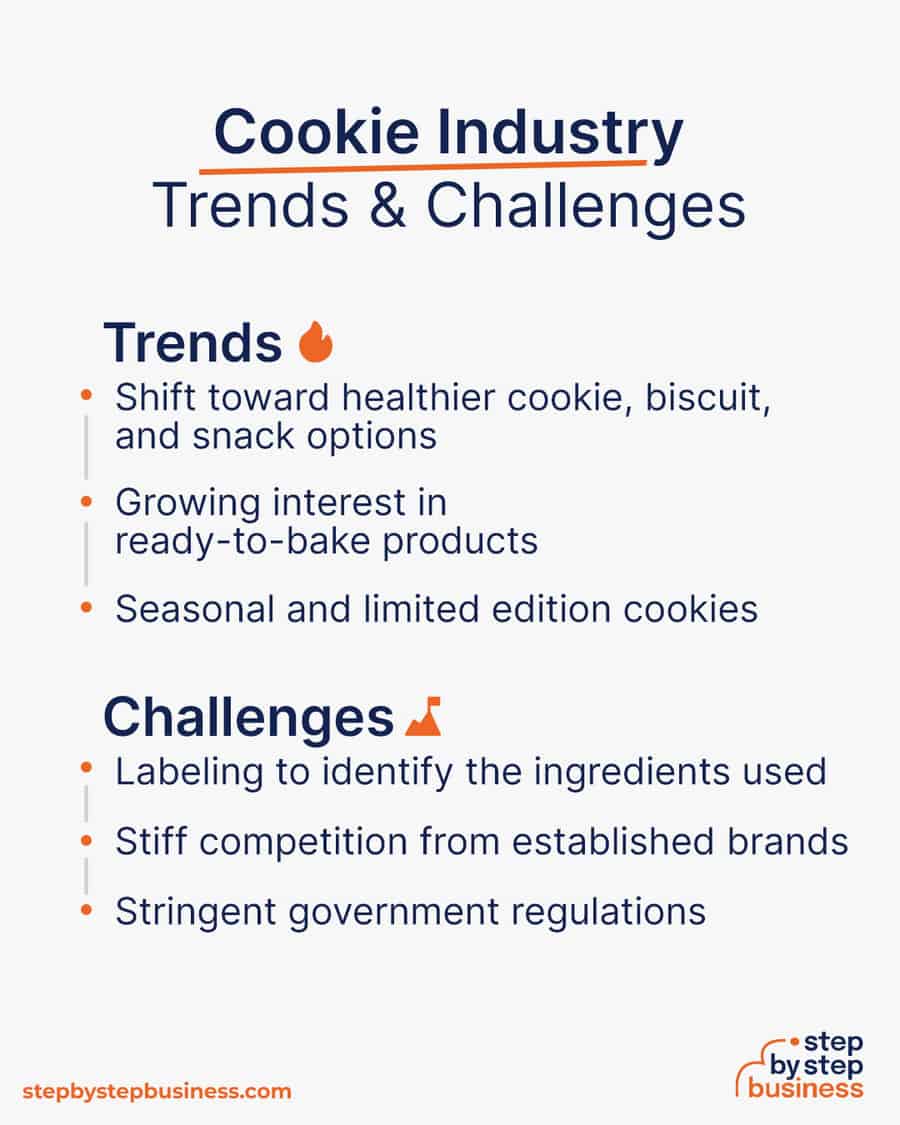
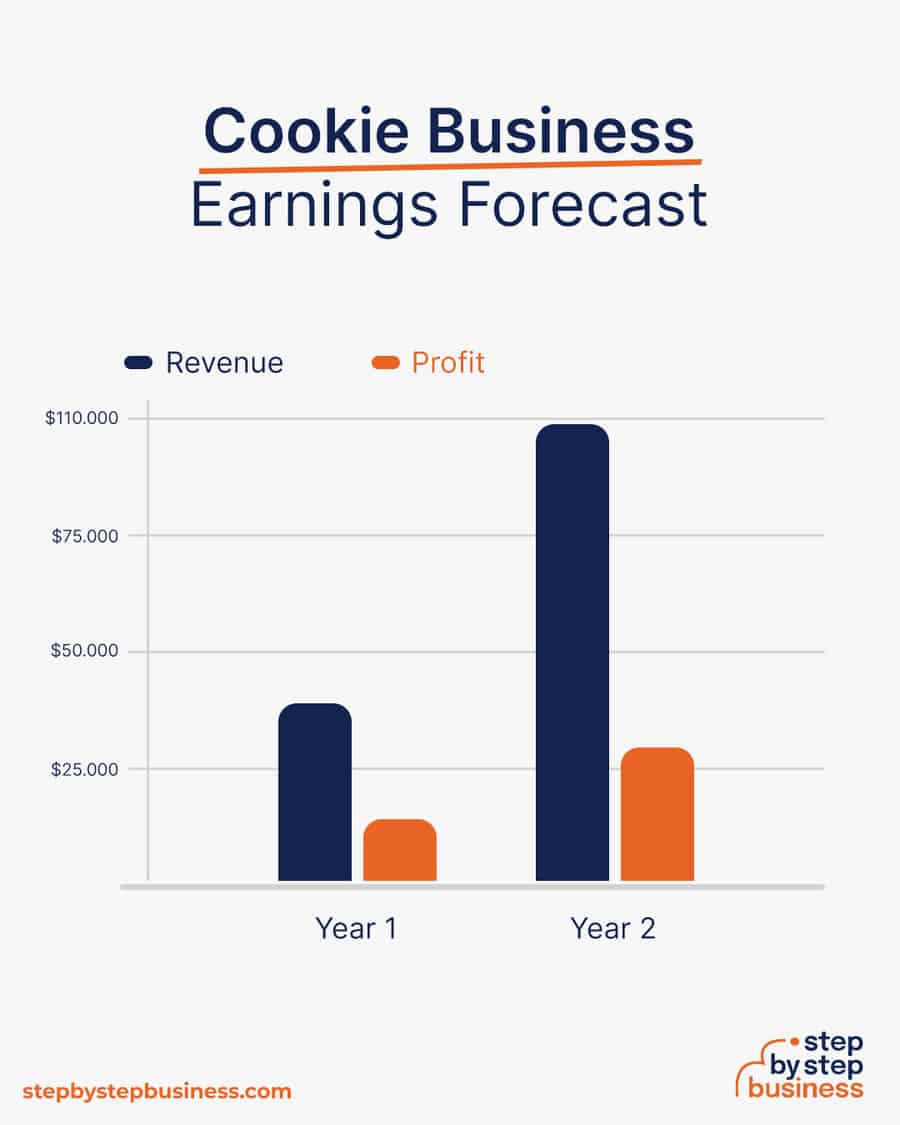




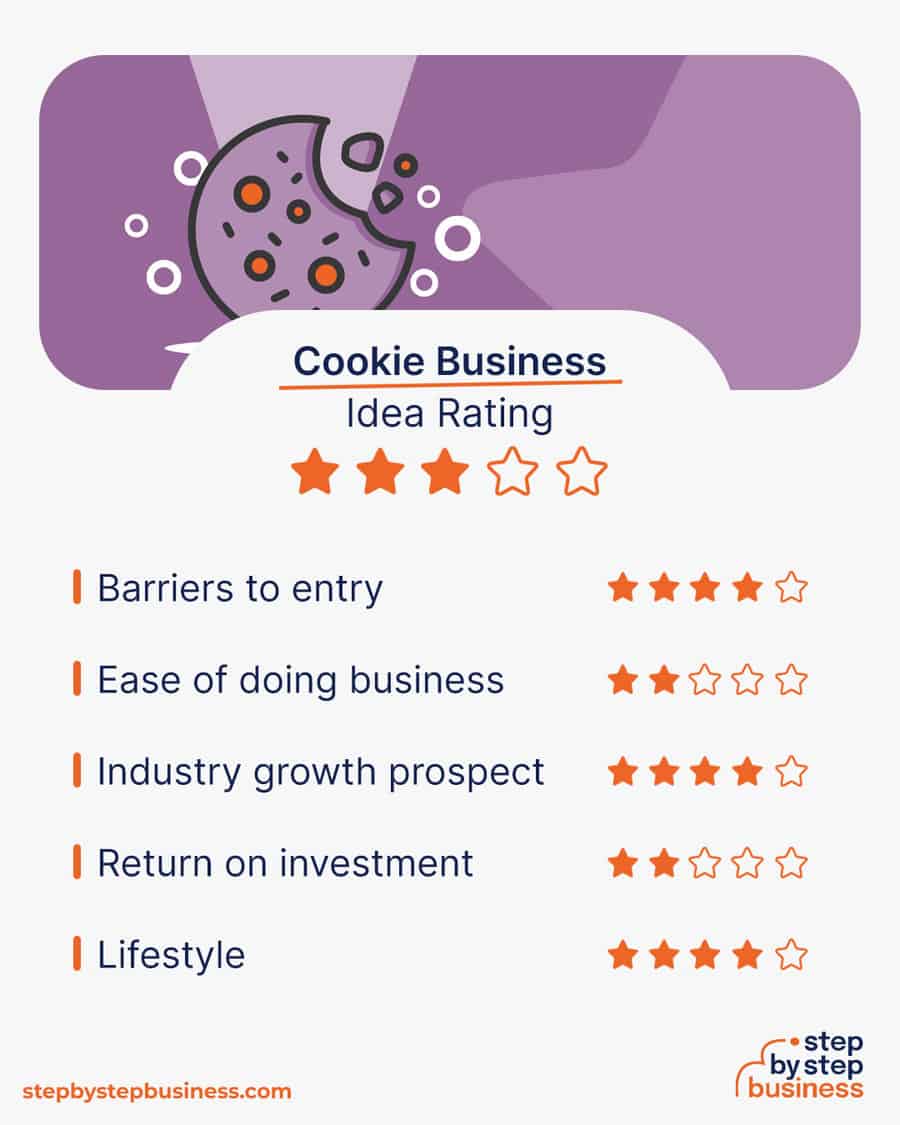









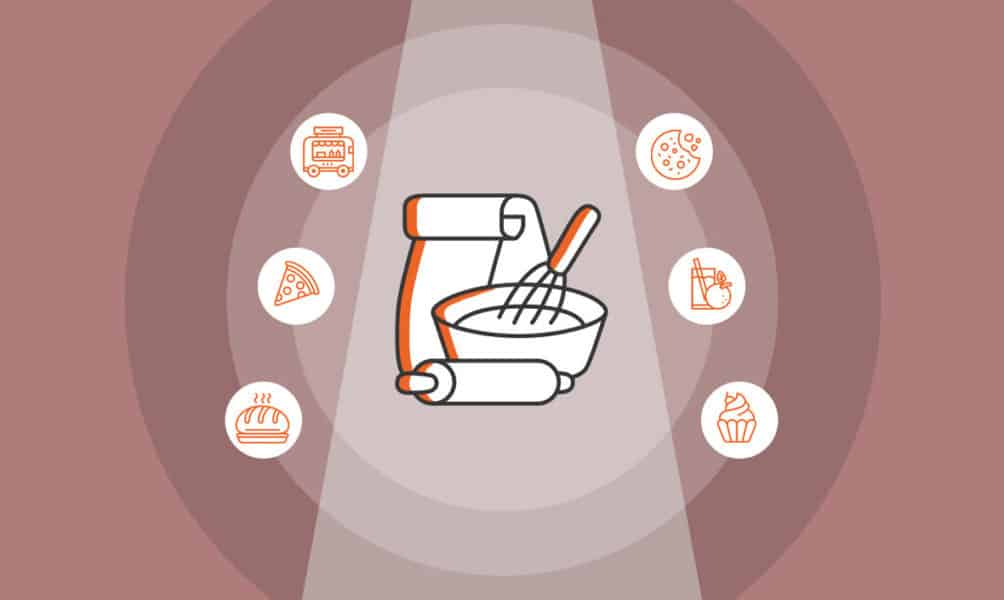

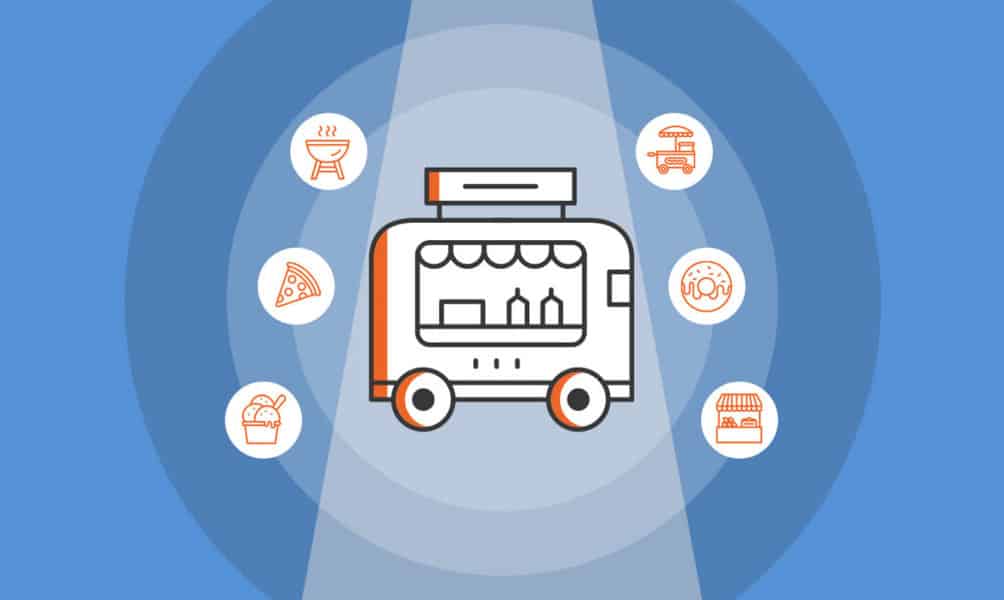
Comments